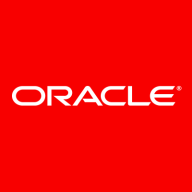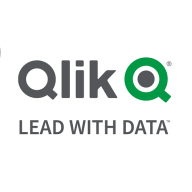

Find out in this report how the two BI (Business Intelligence) Tools solutions compare in terms of features, pricing, service and support, easy of deployment, and ROI.
In my organization, we moved from OBI to Qlik Sense due to limitations with OBI, resulting in very high ROI.
The tendency to route users to sales personnel with limited technical expertise detracts from the support experience.
While tech support is comprehensive, the stability of Qlik Sense means I generally do not need it.
I think they lack in the support system.
In Turkey, the consultant firms are very professional, and they support you.
While Oracle OBIEE is scalable, it is more of a niche product designed to work specifically with Oracle systems.
It is easily scalable with Microsoft, with other services Azure and other tools they provide.
Qlik Sense helps analyze data and can handle larger amounts of data compared to other BI tools.
It performs well in terms of performance and load compared to others.
The stability is very good.
Oracle OBIEE has a steep learning curve compared to tools like SQL Server or Power BI.
Power BI has better visualizations and interactions with updates in 2023 that provide ease of use.
Providing an API feature to access data from the dashboard or QEDs could be beneficial.
There should be more comprehensive documentation and explanatory videos available to help clients understand and calculate capacity-based pricing, making it easier to predict costs before implementing Qlik Sense Cloud.
Oracle OBIEE is quite expensive, especially when compared to Microsoft's solutions.
It is just about how expensive it is to implement.
For small or large organizations needing many or few licenses, pricing varies.
Among the BI tools and data analytics tools, Qlik is the most expensive.
A valuable feature of Oracle OBIEE is its ability to automate some tasks, such as invoice analysis, saving a significant amount of clerical work.
From an end-user perspective, it's convenient and performance-oriented, providing something meaningful from all the organization's data.
The platform also includes AI/ML features for predictive modeling through a no-code component, allowing business users to create and deploy AutoML models without depending on data scientists.
It is a single product that I can use as an ETL database, BI, and more.
| Product | Market Share (%) |
|---|---|
| Oracle OBIEE | 2.0% |
| Microsoft Power BI | 12.7% |
| Tableau Enterprise | 9.2% |
| Other | 76.1% |
| Product | Market Share (%) |
|---|---|
| Qlik Sense | 6.2% |
| Tableau Enterprise | 17.6% |
| Domo | 8.2% |
| Other | 68.0% |


| Company Size | Count |
|---|---|
| Small Business | 40 |
| Midsize Enterprise | 34 |
| Large Enterprise | 102 |
| Company Size | Count |
|---|---|
| Small Business | 32 |
| Midsize Enterprise | 40 |
| Large Enterprise | 83 |
Oracle OBIEE (Oracle Business Information Enterprise Edition) is a business intelligence (BI) tool developed by Oracle. OBIEE will gather, store and analyze an organization's network data and compile the information to create reports, dashboard graphs, and performance analysis. OBIEE’s unique platform allows clients to discover new awareness and improve the speed of completing important business decisions by providing robust visual tools and intuitive realization coupled with the latest unmatched enterprise analytics available. OBIEE helps IT enterprise organizations to experience an intelligent view of all enterprise data from across all sources and empowers trusted users with increased levels of reliable, dependable access, interaction, and the ability to utilize the data to increase the overall effectiveness and productivity of the organization.
OBIEE provides unique immediate mobile access, intuitive dashboards, robust reporting, real-time alerts, metadata search, procedure management, direct access to Big Data resources, enlightened in-memory computing, and seamless systems management processes. These features seamlessly combine to make Oracle OBIEE a complete, top-of-the-line broad solution that is cost-effective, minimizes TCO, and provides a competitive, quick ROI for the entire organization.
Oracle OBIEE Top Features
Reviews from Real Users
Sandeep V., Process System Engineer at a comms service provider, tells us, “This solution is very easy for people who are building ad-hoc things. It's an enterprise solution so it can be deployed for a lot of users. There are some great new features that come with the 12c like data visualization, desktop BI Publisher, automation, and interactive dashboards. The product has good features. “
A user who is a CEO at a consultancy relates, “The most valuable feature is the visualization. The data warehousing, data storage, and data wrangling are all features that are in there, and it's one of the better products out there. A good thing is that for large datasets, it's very stable, especially when you have an Oracle database.”
A user who is a Principal Business Intelligence Architect at a computer software company suggests, "It is very biased towards Oracle infrastructure. One of the major red flags we have at the moment against Oracle is that it doesn't support deployment on other cloud providers. We're quite heavily vested in AWS as our infrastructure, and Oracle is yet to formally support deploying on those virtual infrastructure instances. That's quite disappointing, and it also cuts them out of over 70% of the market."
Qlik Sense is a visual analytics and business intelligence (BI) platform that gives users full control over their system’s data. From this platform they can control every aspect of their system data. It maximizes an organization’s ability to make decisions driven by their data.
Benefits of Qlik Sense
Some of the benefits of using Qlik Sense include:
Reviews from Real Users
Qlik Sense stands out among its competitors for a number of reasons. Two major ones are its associative analytics technology and its remote access capability. Qlik Sense employs an associative analytics engine that gives users the ability to take their data analytics to the next level. Users can create visual connections between different datasets spread across their network, creating deep insights that enable users to gain a full understanding of their data. This engine is easily scaled up to allow a large number of users to benefit from the deep insights that it provides. Users can access Qlik Sense from anywhere in the world. Qlik Sense has an online portal that can be used consistently from anywhere at all. Having the ability to remotely analyze data gives users flexibility when it comes to choosing how to deploy their manpower.
Jarno L., the managing director of B2IT, writes, “The associative technology features are the solution's most valuable aspects. Qlik was the first company to implement an in-memory associative analytics engine. This basically means that all data is loaded into memory, but it also means that instead of joining data together, the data is associated together. From the front end, from the user interface point of view, data can be joined or included or excluded on the fly. It can be drilled down and drilled through and users can slice and dice it and that type of thing can be done from anywhere in the data to any other place in the data. It doesn't have to be predefined. It doesn't have to have hierarchies or anything like that.”
Tami S., the senior business intelligence analyst at the La Jolla Group, writes, “With the changing business landscape, it is nice to access Qlik Sense through an external website. As an organization when we use QlikView Desktop, we need to connect to our internal network. We can access QlikView through the QlikView access point but the website has a little different look and feel than the desktop application. We appreciate that Qlik Sense is browser-based and the user experience is the same whether at home, in the office or on a boat. As long as the user has internet access, performance is the same.”
We monitor all BI (Business Intelligence) Tools reviews to prevent fraudulent reviews and keep review quality high. We do not post reviews by company employees or direct competitors. We validate each review for authenticity via cross-reference with LinkedIn, and personal follow-up with the reviewer when necessary.